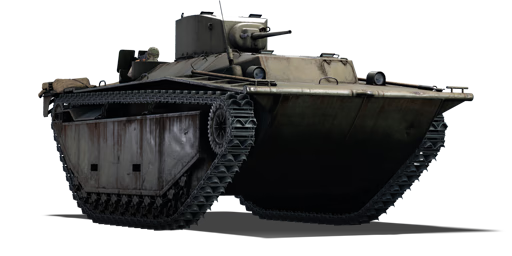The Amphibious Vehicle, Tracked, Amoured, Mark 1 - LVT(A)(1) is the first (armoured, infantry support) variant of the Amphibious Vehicle, Tracked (LVT) family. Originally designed and used as cargo ship carriers for ship-to-shore operations to transport personnel and materials, they gradually evolved into amphibious fire support vehicles, as well as other amphibious assault landing variants. The first armoured, infantry support variant of the LVT was the LVT(A) Mark 1. With the first combat experience of Pacific amphibious operations for the U.S. Navy and U.S. Marines, it was evident that more firepower than the M2HB Browning heavy machine gun commonly utilized by the U.S. Marines was required. It had a turret similar to the M3 – a 37 mm M6 tank gun on an M44 mount and a coaxial 7.62 mm M1919A4 light machine gun, with two extra 7.62 mm M1919A4 light machine guns mounted on ring mounts on the aft deck behind the turret. A vertical stabilizer was integrated into the main gun mount to allow the LVT(A)s to engage enemy positions while still moving in the water. Throughout the war, a total of 509 units were produced. These vehicles were intended to provide direct fire support to attacking Marines as they established a beachhead against their adversaries' defences.
Introduced in Update 1.59 "Flaming Arrows", the LVT(A)(1) is a beginner light tank under the U.S. Army ground forces. It has similar firepower to the M3 but has the unique ability to traverse across water, which most other tanks do not have. To keep afloat in the water, the tank is made of relatively thin steel plates and provides little protection against anything heavier than light machine gun fire. Nonetheless, it provides a completely different experience and viable techniques in the accumulation of light tanks in the U.S. Army ground forces that inexperienced players can easily explore.









